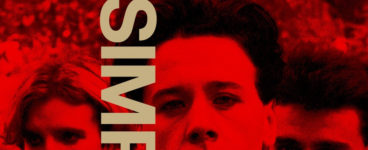‘To do this job you have to be two things that seem at odds with each other; professional and compassionate. Sometimes I’m too much of the second one, and that’s my curse. I do what I do because I care.’
Looking for a new, cracking crime fiction novel? Well, let us introduce you to C S Robertson’s The Undiscovered Deaths of Grace McGill. It comes recommended by some of Scotland’s most popular crime fiction writers including Helen FitzGerald and Doug Johnstone, and that’s good enough for us! We hope you enjoy this extract.
Extract taken from The Undiscovered Deaths of Grace McGill
By C S Robertson
Published by Hodder & Stoughton
The hallway is a sea of mail and fast food flyers. A narrow pathway has been cut through the middle of it by the feet and legs of police and paramedics, leaving knee-high mounds to either side. This is what you get when time stands still, when no one knows or cares that there’s no longer anyone at home. I’ve seen it too many times, letters continuing to be sent because direct debits continue to be paid, pizza offers and takeaway discounts that can’t tell the difference between life and death, and guilt-etched Christmas cards from people who can’t find the time to call or visit.
It was a water leak that brought people to the door. A student in number six noticed a small sag forming in his ceiling and called his landlord. Three visits to Mr Agnew’s flat brought no response so they’d little choice but to call the police, who put the door in and found the old man lying dead in bed.
That was two days ago. The cops have gone, what was left of Thomas Agnew has gone too, and only the smell remains. I’m suited up and wearing a respirator mask but there’s still no missing the odour. I got used to it ages ago, I’ve had to, but that doesn’t mean I’m unaware of it.
I know the science. The very second that life ends, decomposition begins. The gases and chemical compounds that get released from the body all have their own smell. Cadaverine and putrescine smell like rotting flesh. Skatole smells like shit. Indole is mustier, like mothballs. Hydrogen sulfide is rotten eggs, methanethiol is rotting cabbage, dimethyl disulfide and trisulfide are like the worst garlic you can imagine. They all smell bad, but together they smell like nothing other than death.
This one is bad. The boys in blue would have got it full blast when they put the door in. Some of them can’t handle it and you hear the odd tale of tough-guy cops throwing up, eyes streaming, stomachs heaving. If they’re lucky it might be so bad that the underwater unit gets called in with breathing apparatus to get the body into the shell.
I start, as always, with an appraisal of the property, doing an initial walk through and hazard assessment of the scene. Moving quietly through the flat, I head for the bedroom. Mr Agnew’s final resting place. His deathbed. It’s where the dangers are; potential biological hazards like bloodborne pathogens, human body fluids and tissue. They could be hiding in grout, cement, wood flooring, sub flooring, you name it. The entire room has the potential to emanate death odours, so my first task is to use cross-contamination protocol to control it by securing and separating it from the rest of the flat. I seal it off, then set about making it safe.
It’s my job. I’m a lonely death cleaner.
To give it its Sunday name, I carry out bioremediation. I do the deep clean that’s needed after a body has lain decomposing for so long. It’s smelly, it’s sad, it’s messy, and it’s dangerous.
People almost always want the clean-up done quickly. It’s another thing out the way, something else they don’t have to worry about, and it helps their grieving process and their sense of guilt if they don’t have to think about their loved one lying alone in their own dirt. From the door, I can see a chest of drawers topped with a ragged line of framed photographs, a large pine wardrobe with its doors half open. There are more unopened letters, discarded socks, and a small stack of yellowing newspapers.
I pick my way carefully across the room until I’m standing by his bed. I can’t help but stare. When someone has lain in the same place for five months, you can still see where they’ve been, still see their shape, long after they’ve gone.
I don’t know how many people have taken the time to remember him, but the bed has. The bed holds his memory, his length, his width, his final outline. It holds hairs on the pillow and his depth in its contours. It also holds a dark soup of bodily fluids. Mopping them up is my next job.
The police are waiting on post-mortem results, but they’ve told me there are no suspicious circumstances, sure that Mr Agnew just passed away in his sleep. I kneel by the bed, the only sound the rustling of my protective suit. As I look closer, my breath catches in my throat and I’m aware of my skin tingling and my heart rate rising, but nothing else. The room, the house, the outside world, all shrink into black silence and the only thing I can see or think of is the tiny object on the corner of Mr Agnew’s pillow.
My hands are gloved in blue as I pick it up. A dried daisy. I hold it up to the light, turning it between two fingers. The petals used to be white but now they’re a murky grey. The yellow centre is dull and burned out. I stare at it for what could be seconds or minutes until the spell breaks and I bring it near to my mouth and kiss it through my face mask before dropping it gently into a clear plastic bag. Mementoes must be kept or else there’s nothing to trust but memories.
I’ve only been told three things about the man. His name, that he’d lived alone, and that he lay undiscovered for an estimated twenty weeks. The police are appealing for family members to get in touch as there are no known relatives.
I use a fogger to get rid of the insects, flies mainly, that have infested the room. I don’t mind them particularly, it’s maggots that I can’t stand. I can’t even allow myself to think about their feasting.
To do this job you have to be two things that seem at odds with each other; professional and compassionate. Sometimes I’m too much of the second one, and that’s my curse. I do what I do because I care.
The Undiscovered Deaths of Grace McGill by C S Robertson published by Hodder & Stoughton, priced £14.99.
ALSO IN THIS ISSUE

 Themes for Great Cities
Themes for Great Cities
‘In the thick of it all I hear Jim Kerr’s voice, an open channel between the music and the swirl of …

 The Undiscovered Deaths of Grace McGill
The Undiscovered Deaths of Grace McGill
‘To do this job you have to be two things that seem at odds with each other; professional and compas …













